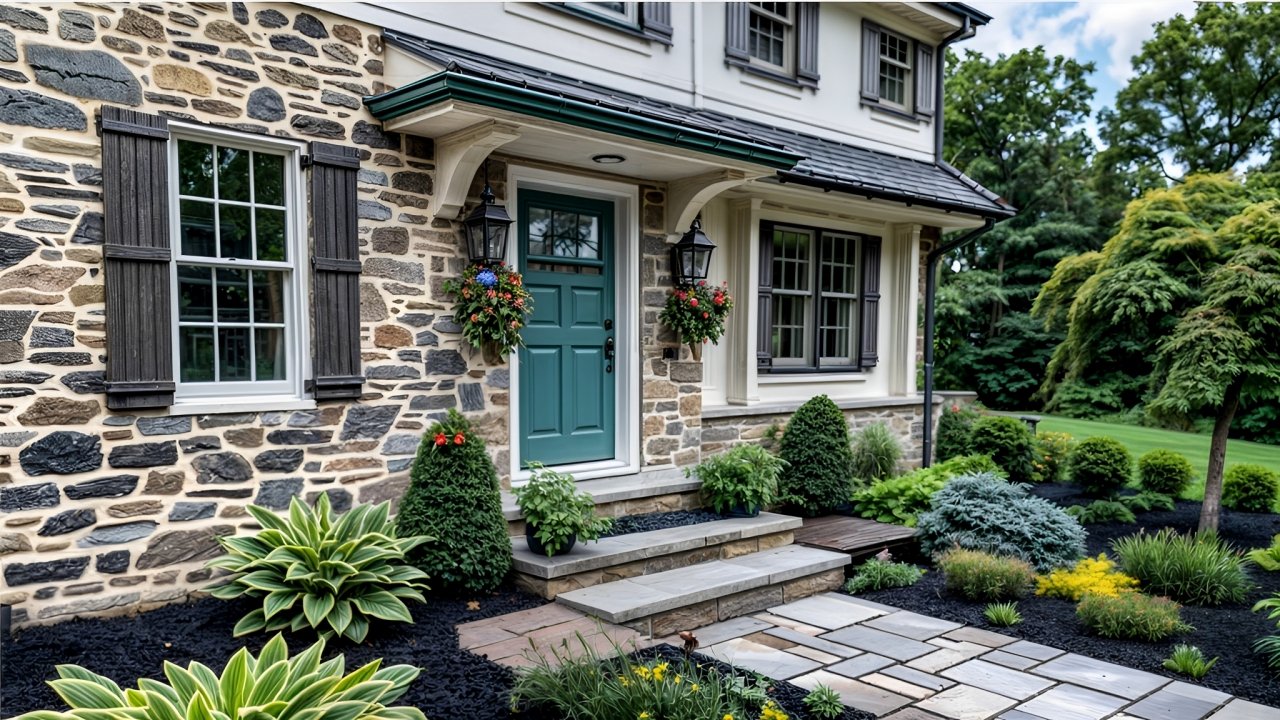A blue green front door brings a fresh and inviting touch to your home’s exterior. From serene seafoam to bold turquoise, the right shade can enhance your curb appeal while expressing your personality. Discover how to choose the perfect hue that balances beautifully with your home’s design and creates a lasting impression.
The Charm of Blue Green Doors
Imagine walking down a sun-dappled street, where the rhythm of life unfolds in vibrant hues. Among the myriad of colors that adorn homes, blue green front door colors stand out with their unique charm, reminiscent of coastal breezes and serene lakes. This captivating blend evokes feelings of tranquility and rejuvenation, inviting guests to step into a world where the hustle and bustle fades away. Whether you opt for a soft teal that whispers of distant shores or a bold turquoise that commands attention, each shade has its own personality, reflecting both your style and the character of your home.
Beyond aesthetics, blue-green doors can also serve as a subtle nod to nature. The color palette draws inspiration from the sea and sky, fostering a sense of harmony and connection to the outdoors. This can be particularly appealing in urban settings, where a splash of nature-inspired color can create an oasis amidst concrete landscapes. Additionally, blue-green shades are versatile; they complement a range of architectural styles from modern to vintage, enhancing the overall curb appeal while making a statement that feels effortlessly chic. Choosing the right hue not only beautifies your entrance but also cultivates a welcoming atmosphere that resonates with both residents and visitors alike.
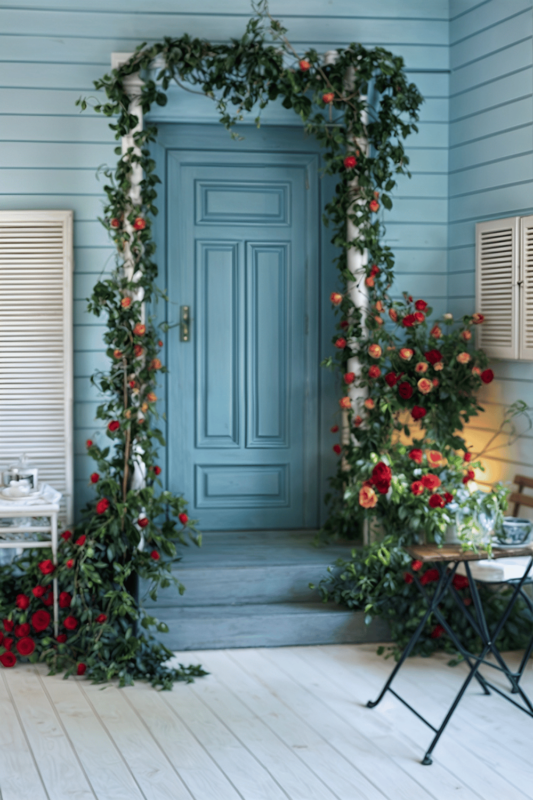
Understanding Color Psychology in Home Design
Color psychology plays a pivotal role in shaping the atmosphere of our living spaces, and the choice of colors can evoke specific emotions and responses. When it comes to selecting the perfect shade of blue-green for your front door, understanding the psychological implications of this color can enhance not only the curb appeal of your home but also the feelings it instills in visitors. Blue-green hues, often associated with tranquility and balance, can create an inviting aura that welcomes guests while simultaneously providing a sense of calm for those who live there.
Additionally, blue-green is reminiscent of nature, evoking feelings of serenity akin to a gentle sea or lush forest. This connection can promote relaxation and peace, making it an excellent choice for a front door—an entry point that sets the tone for what lies beyond. By choosing a shade that leans more toward teal or aqua, you might inspire creativity and rejuvenation, while deeper shades like turquoise can convey stability and trust. Each subtle variation in tone brings its own unique vibe, allowing homeowners to express their personality and values through this seemingly simple design element.
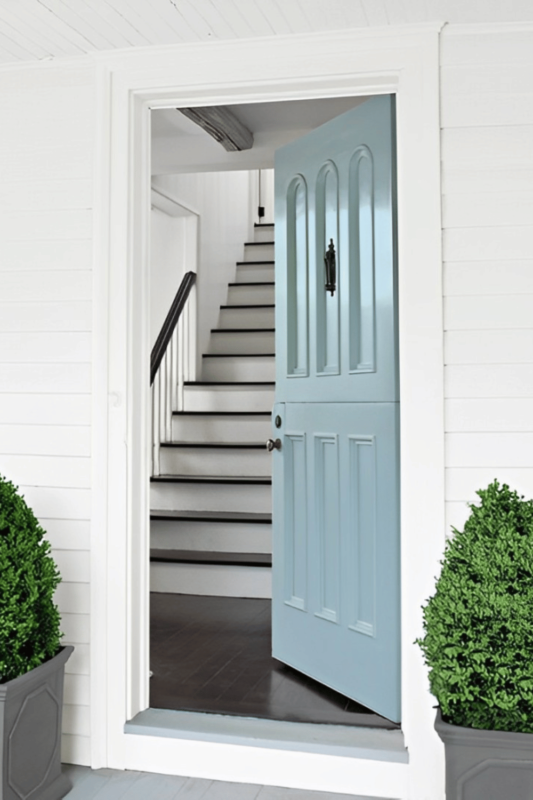
Assessing Your Home’s Architectural Style
Understanding your home’s architectural style is crucial when selecting the perfect shade of blue-green for your front door. Each architectural style has its own unique characteristics that can harmonize or clash with color choices. For instance, a charming Craftsman bungalow often calls for earthy tones, while a modernist structure might benefit from a bolder, vibrant hue. By assessing the elements of your home—like rooflines, window styles, and exterior materials—you can pinpoint a color that enhances its inherent beauty rather than detracting from it.
Consider the emotional impact of your chosen shade in relation to your home’s architecture. A soft teal can evoke tranquility and warmth, making it an excellent choice for traditional homes that aim to exude a welcoming vibe. Conversely, a deep turquoise may add a touch of drama and contemporary flair to a minimalist design. By aligning your color selection with the architectural narrative of your home, you not only elevate its aesthetic appeal but also create a cohesive story that resonates with passersby and visitors alike.
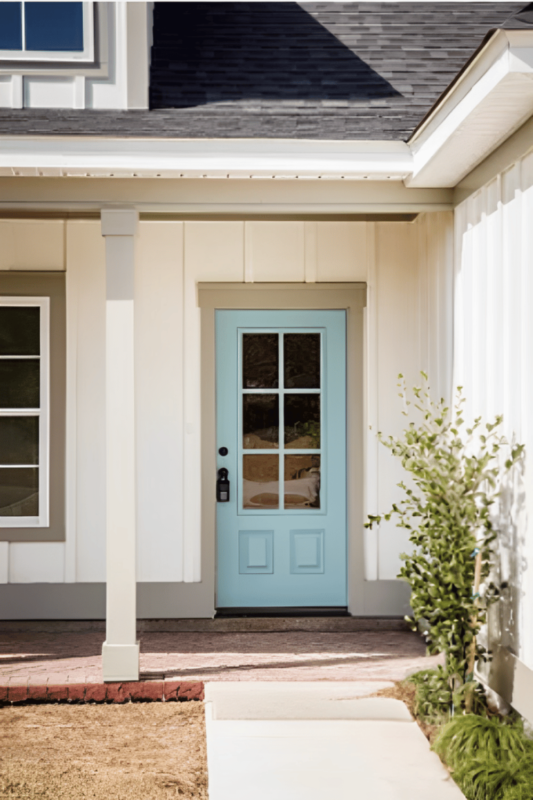
Considering Your Surrounding Landscape and Environment
When selecting the perfect shade of blue-green for your front door, it’s essential to take a close look at your surrounding landscape and environment. The hues in your garden, the architecture of your home, and even the seasonal changes can influence how a color will appear in different lighting. For instance, if you have lush greenery or vibrant flowers that bloom in warm tones, a cooler blue-green can create a stunning contrast, making your entrance pop while harmonizing with nature.
Consider the overall ambiance you want to create. A soft, muted teal may evoke a sense of tranquility and blend seamlessly with a coastal or rustic backdrop, while a bold turquoise can energize a modern setting or complement an eclectic garden. Additionally, think about how your chosen shade interacts with the changing light throughout the day—morning sunlight may enhance its brightness, while evening shadows could soften its impact. By thoughtfully considering these elements, you can ensure that your front door not only stands out but also feels like a natural extension of your home’s character and surroundings.

Analyzing Lighting Conditions for Color Selection
When selecting the perfect shade of blue-green for your front door, understanding how different lighting conditions can affect color perception is crucial. Natural light, for example, brings out the vibrancy of hues, making a teal door pop with energy during the day. However, as the sun sets and artificial lighting takes over, the same shade may appear muted or even take on a different hue entirely. To truly capture the essence of your chosen color, consider observing it at various times throughout the day. This not only allows you to appreciate its transformation but also helps you envision how it will harmonize with the surrounding landscape.
In addition to natural light, the type of artificial lighting around your front door can dramatically influence color selection. Warm-toned bulbs can soften the appearance of blue-green shades, lending a cozy, inviting feel. Conversely, cooler LED lights can enhance the crispness of the color, showcasing its modernity. Testing your potential choices under both lighting conditions will provide clarity on which shade aligns best with your home’s personality and architectural style. By carefully analyzing these factors, you can ensure that your front door becomes a true reflection of your aesthetic vision.
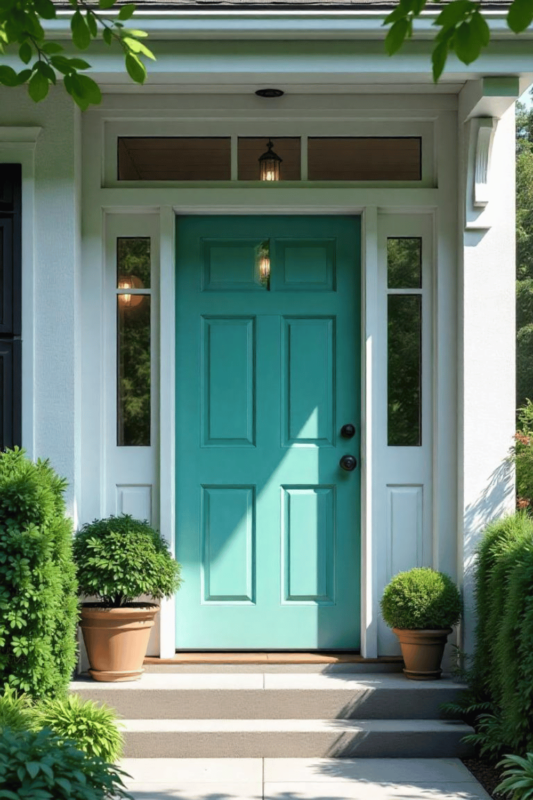
Testing Paint Samples on Your Door
Testing paint samples directly on your door can be a transformative experience, allowing you to visualize how each shade interacts with your home’s unique lighting and surroundings. Instead of relying solely on small swatches, apply generous patches of paint to your door. This not only helps you assess the color in varying light conditions throughout the day but also gives you a better sense of its vibrancy and depth. Remember, the color you perceive in a store can shift dramatically when exposed to natural sunlight or artificial lighting at night.
Consider using painter’s tape to create distinct sections for each sample, ensuring clean lines and easy comparison. As you observe how the colors change from morning to evening, take note of how they complement other elements of your home, such as landscaping or exterior materials. You might discover that a shade that seemed too bold in the store takes on an inviting warmth when framed by your garden. Ultimately, this hands-on approach not only fosters a deeper connection to your chosen color but also ensures that your front door becomes a true reflection of your style and personality.
Choosing Between Glossy and Matte Finishes
When selecting the perfect shade of blue-green for your front door, the finish you choose can dramatically alter its impact on your home’s exterior. Glossy finishes are often celebrated for their reflective quality, which can enhance the vibrancy of a color, making it pop against the backdrop of your home. A glossy blue-green door will catch the eye and draw attention, creating an inviting focal point that exudes modern charm. However, it’s essential to consider the overall aesthetic of your home; a high-gloss finish might clash with rustic or traditional styles, where a softer look is desired.
On the other hand, matte finishes offer a subtler, more sophisticated appearance that can evoke a sense of calm and understated elegance. A matte blue-green door complements natural surroundings beautifully, allowing the hues to blend harmoniously with landscaping and architectural features. This finish is particularly effective in creating a welcoming ambiance without overwhelming the senses. Ultimately, the choice between glossy and matte should reflect not only your personal style but also the mood you wish to convey—whether it’s bold confidence or serene tranquility.
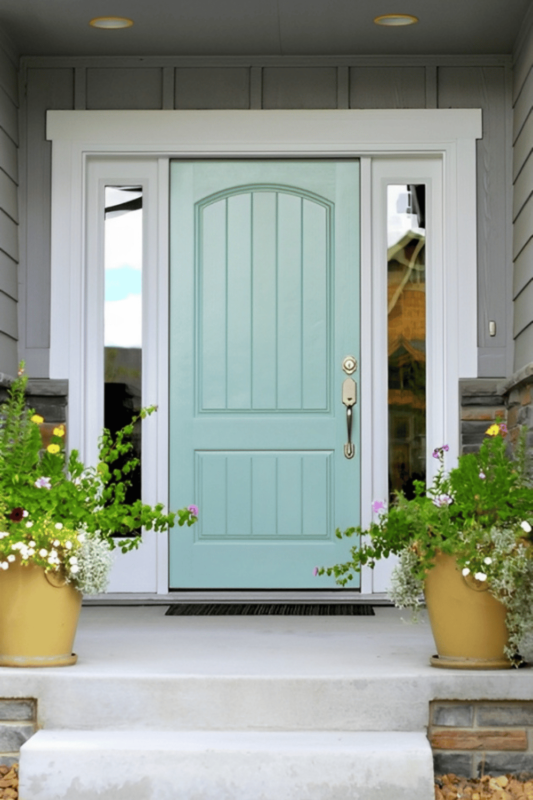
Popular Blue Green Shades to Consider
When it comes to blue-green shades, the allure lies in their versatility and ability to evoke different moods. One popular choice is teal, a vibrant blend that can energize your entryway while still maintaining a sense of calm. Teal exudes a sophisticated charm, making it an excellent option for contemporary homes or coastal retreats. Pair it with crisp white trim for a fresh, inviting look that greets guests with warmth and style.
Another captivating shade is turquoise, which brings a playful and cheerful vibe to your front door. This bright hue can be particularly striking against darker siding or natural wood accents, creating a stunning contrast that draws the eye. If you’re leaning toward something more subdued, consider a soft seafoam green. This gentle tint captures the essence of nature and tranquility, offering a serene welcome without overwhelming your home’s exterior. Each of these shades offers a unique personality, allowing you to express your individual style while enhancing curb appeal.
Making Your Final Decision
As you stand at the crossroads of color selection, remember that your final decision should reflect not only your aesthetic preferences but also your personality and lifestyle. Consider how the chosen shade will harmonize with the architectural style of your home and the surrounding landscape. A vibrant turquoise may evoke a sense of coastal charm, while a muted teal can lend an air of sophistication and tranquility. Visualize how the color interacts with natural light throughout the day—will it bring warmth to your entryway during the golden hour, or will it appear cool and serene in the shadows?
Engage your senses by creating a mood board that captures the essence of your ideal front door. Incorporate fabric swatches, images from nature, or even paint samples to help you immerse yourself in the potential ambiance. This tactile approach not only solidifies your vision but also provides a visual context for how the blue-green shade will play with other elements of your home’s exterior, such as trim and landscaping. Ultimately, trust your instincts; choosing a color should feel like a celebration of your unique style, welcoming guests while reflecting your personal narrative.
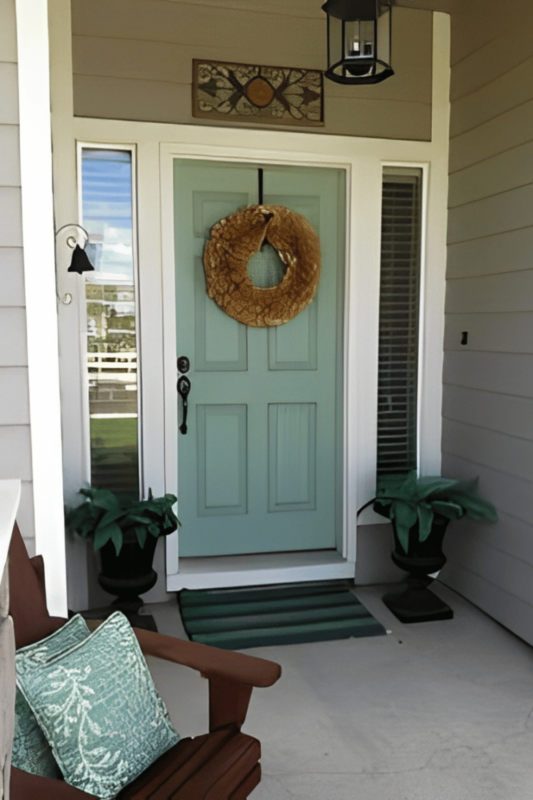
Frequently Asked Questions (FAQ)
- What factors should I consider when choosing a shade of blue green?
Consider the architectural style of your home, the surrounding landscape, and how the color complements other exterior elements like trim and siding. - How can I test blue green shades before painting my door?
Purchase sample paint in your chosen shades and apply them to a small section of your door or use poster board to see how they look in different lighting throughout the day. - Are there specific blue green shades that work better in certain climates?
Lighter shades may be more suitable for warmer climates as they reflect heat, while deeper shades can add warmth in cooler regions. - How do I ensure my blue green door complements my home’s color scheme?
Look at the color wheel; blue green pairs well with neutrals like gray and beige, as well as contrasting colors like coral or mustard for a vibrant look. - Should I consider the finish of the paint for my front door?
Yes! A glossy finish can enhance the color and provide durability, while a matte finish offers a more subdued appearance but may require more frequent touch-ups. - What is the best way to maintain the color of my blue green front door?
Regularly clean the door with mild soap and water, and consider applying a clear sealant to protect against fading from sun exposure. - Can I mix different shades of blue green for a unique look?
Absolutely! Mixing shades can create depth and interest, but be sure to test combinations to ensure they harmonize well together. - What psychological effects does the color blue green have on visitors?
Blue green is often associated with tranquility and calmness, making it a welcoming choice that can create a sense of peace for guests entering your home.
>> Learn more: How to Create Stunning Seasonal Front Porch Displays?


